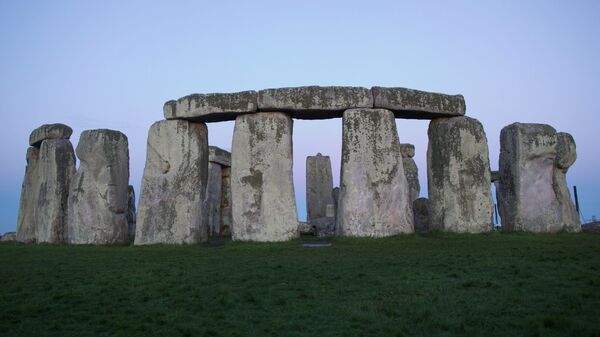Leading archaeologists in the UK are insisting that a £1.6 billion road tunnel through the iconic Stonehenge landscape should be abandoned, reports The Guardian.
One reason to scrap the project, they say, is the recent discovery nearby of Britain’s largest prehistoric structure to date by the Stonehenge Hidden Landscapes Project, which was surveying the landscape around one of Britain’s most recognizable landmarks.
'Astonishing' giant circle of pits found near #Stonehenge reveal new insights into early inhabitants of Britain https://t.co/M3P52EiKDk @ST0NEHENGE #neolithic #archeology pic.twitter.com/cFtF1RxV5i
— Nicholas Nicola (@nicolasnicola22) June 22, 2020
Mike Parker Pearson, professor of British later prehistory at University College London, was quoted as saying:
“This is just another reason to give up this disastrous white elephant of a scheme.”
Pearson dismissed arguments in favour of the project presented by Highways England, who argue improving the A303 with a tunnel will cut congestion, saying:
“The expenses per mile are mind-boggling. It’s a tunnel that’s basically 2.9 km long and it’s going to cost £1.6 billion… I think they’re saying [it’ll take] five to seven years to construct, so that would be continuous traffic jams, and there’s concern that the vibrations will actually impact on archaeological deposits, causing the ground to crack.”
In response, Derek Parody, Highways England project director for the A303 Stonehenge scheme, said:
“The latest finds are in the north-east of the world heritage site, well outside the scheme boundary and at its closest point half a kilometre north of the planned A303 upgrade.”
He added that meticulous planning and survey work had gone into the project using ground-penetrating radar, in compliance with Historic England-required standards.
Astonishing Find
A giant neolithic structure, dating back to the same period when Stonehenge was suggested as having been erected, some 4,500 years ago, has been found by a team of archaeologists from several universities, using the newest technology that ruled out any traditional digging on the sire.
Remote sensing technology and sampling revealed a 2-km (1.2-mile) wide circle of shafts, each more than five metres deep and up to 20 metres across, surrounding a settlement at Durrington Walls. The structure also included a henge, or circular structure, made of timber posts.
The site is located about 3.2 km northeast of Stonehenge, on Salisbury Plain near Amesbury, Wiltshire.

What had earlier been dismissed as possibly natural sinkholes was revealed through geophysical prospection, ground-penetrating radar and magnetometry to be a circle of pits significantly larger than any comparable prehistoric monument in Britain.
The scientists surmise the structure was a boundary guiding people to a sacred area, as Durrington Walls, one of Britain’s largest henge monuments, is situated at its centre.
Vincent Gaffney of the University of Bradford, co-principal investigator of the Stonehenge Hidden Landscapes Project, urged that “sensitive decisions” be taken at a heritage site as complex as Stonehenge, adding:
“Remote sensing has revolutionised archaeology and the scale at which we now gather data is beginning to transform our knowledge of landscapes, even at Stonehenge, an area we thought we knew well. The new [discovery] is probably the first of many new insights and discoveries. I feel we should consider the implication of these discoveries before a tragic loss ensues.”
Parker Pearson added that other shafts have been identified by the team that might potentially be part of other formations, even nearer Stonehenge.
Referring to the road tunnel project, which the government is expected to decide on by 17 July, Professor Pearson said:
“The problem is that this is a scheme that was hatched back in the 1980s, when they really had no idea about the potential of what might be there. Most archaeologists around the world are horrified at what’s going on.”




